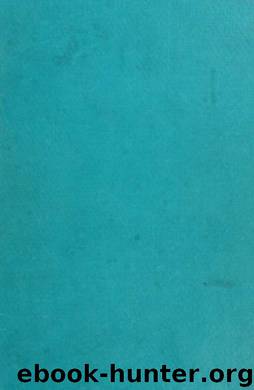Island biology by Carlquist Sherwin John 1930-

Author:Carlquist, Sherwin John, 1930-
Language: eng
Format: epub
Tags: Island ecology
Publisher: New York, Columbia University Press
Published: 1974-03-14T16:00:00+00:00
Insular Woodiness
Euphorbia, for example. However, continental species of these genera are at least as arborescent as insular species and occur in open country in any case, not in closed stands.
Wallace (1878) claimed that woodiness of island plants connotes greater longevity, which permits repeated flowering and thereby a greater chance for cross-pollination in situations where paucity of pollinating insects would make cross-pollination of more ephemeral plant species less likely. He assumes that paucity of insular pollinating insects is a bottleneck. This assumption is dubious: plants may self-pollinate (see chapter 13), at least in a number of cases. Moreover, if conditions are suitable for an insect species with pollinating capabilities, population density of the insect should, if anything, be greater than in a mainland species (assuming the nature of insect faunas on islands is disharmonic), or else a suitable insect would be expected to be entirely absent—but rarely the intermediate condition Wallace predicates. If Wallace's assumption were true, more ephemeral species would be expected to evolve on islands as suitable insects became available, but ephemeral species are the exception on oceanic islands, as seen later in this chapter. Climatic factors, again, seem to be overriding in evolution of growth forms on islands. Less pronounced seasonality in flowering does occur in some insular plants, but this extension of flowering time appears to be the result of adjustment to less seasonal insular climates, not a factor for establishment of groups.
Measures of Selection and Adaptation
TRANSPLANT STATIONS
Thus far, no rigorously chosen and monitored transplant stations, such as those employed by the Carnegie Institute of Washington in the various studies by Clausen, Keck, and Hiesey, have been used for the study of insular plants and their tolerances. Cultivation of plants of Echium (Boraginaceae) from Macaronesia was described in chapter 5. Some insular species have been cultivated in the following California localities, however, and even though the results are crude, they may suggest the value of carefully performed studies:
1. San Francisco (Golden Gate Park, ca. 2 mi. inland from coast). Both Wilkesia (Asteraceae: from Kauai, 2000-3000 ft) and Lobelia
Download
This site does not store any files on its server. We only index and link to content provided by other sites. Please contact the content providers to delete copyright contents if any and email us, we'll remove relevant links or contents immediately.
| Anatomy | Animals |
| Bacteriology | Biochemistry |
| Bioelectricity | Bioinformatics |
| Biology | Biophysics |
| Biotechnology | Botany |
| Ecology | Genetics |
| Paleontology | Plants |
| Taxonomic Classification | Zoology |
Sapiens: A Brief History of Humankind by Yuval Noah Harari(14252)
The Tidewater Tales by John Barth(12608)
Mastermind: How to Think Like Sherlock Holmes by Maria Konnikova(7227)
Do No Harm Stories of Life, Death and Brain Surgery by Henry Marsh(6891)
The Thirst by Nesbo Jo(6828)
Why We Sleep: Unlocking the Power of Sleep and Dreams by Matthew Walker(6618)
Life 3.0: Being Human in the Age of Artificial Intelligence by Tegmark Max(5474)
Sapiens by Yuval Noah Harari(5294)
The Longevity Diet by Valter Longo(5019)
The Body: A Guide for Occupants by Bill Bryson(4974)
The Rules Do Not Apply by Ariel Levy(4861)
The Immortal Life of Henrietta Lacks by Rebecca Skloot(4525)
Animal Frequency by Melissa Alvarez(4395)
Why We Sleep by Matthew Walker(4360)
The Hacking of the American Mind by Robert H. Lustig(4318)
Yoga Anatomy by Kaminoff Leslie(4306)
All Creatures Great and Small by James Herriot(4232)
Double Down (Diary of a Wimpy Kid Book 11) by Jeff Kinney(4207)
Barron's AP Biology by Goldberg M.S. Deborah T(4097)
